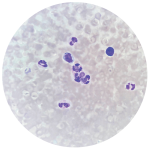
Natali_ Mis / shutterstock.com
SAN FRANCISCO—The challenges of trying to solve the puzzle of lupus, in light of its broad heterogeneity of symptoms, manifestations in clinical involvement and treatment response, and the sheer complexities of the immune system, are driving researchers into ever more elaborate investigations of how the immune system functions in lupus patients.
Genetic, transcriptomic and epigenetic research strategies were presented in a plenary session at the 13th International Congress on Systemic Lupus Erythematosus (SLE), held April 5–8. Researchers detailed their attempts to explore gene expression data, different pathways of genetic immunoregulation, novel regulatory elements at the cellular and molecular levels and data mining.
For a condition that might not even be a single disease, and for which the causes may involve interactions of genetic, epigenetic and environmental factors, this kind of cutting-edge genetic research points toward a variety of future treatment strategies and responses.
Cristina Lanata, MD, assistant adjunct professor of rheumatology at the University of California, San Francisco, chaired the plenary session on genetics and epigenetics at the conference and noted every presenter had a different story to tell about the genetic and epigenetic drivers of lupus. Epigenetics involves modifications in the expression of genes rather than in their underlying genetic code. These biologic mechanisms switch genes on or off, and the epigenome has been implicated in a variety of immune-mediated rheumatologic conditions.
“What we saw at the plenary was a variety of research strategies that are integrating previous knowledge regarding genetic risk factors for SLE and taking them forward with functional studies. These ranged from very controlled molecular studies to new mouse models of SLE. We also saw population-based approaches that try to integrate different layers of –omics data to stratify SLE into different subtypes according to their molecular characteristics, with the hope of better targeting SLE patients with the appropriate therapies.” Dr. Lanata said.
Gene Expression Data
Presenter Marta E. Alarcón-Riquelme, MD, PhD, head of medical genomics at the University of Granada, Spain, described her group’s efforts to use gene expression data from a database of 80 pediatric and 65 adult patients with lupus and six other systemic autoimmune diseases using multi-omic integrative analysis.1 “We took all the gene expression data there were,” she said.
“There is controversy in the field over whether lupus is actually one disease,” Dr. Alarcón-Riquelme noted. “Does its heterogeneity point to different mechanisms of disease? What lies behind the response or non-response to treatment? Can we subtype autoimmune disease in a more biological way, regardless of clinical manifestations of disease? Can we differentiate subgroups based on their genetic markers?” Ultimately, she asked, can research advance from a clinical diagnosis of lupus and other rheumatologic conditions to a molecular diagnosis, and would that facilitate drug repurposing and more individually targeted therapies?
Timothy Niewold, MD, director of NYU Langone’s Judith & Stewart Colton Center for Autoimmunity, also discussed sub-phenotype mapping to better understand lupus genetics, and, in particular, genetic associations with higher levels of serum interferon alpha circulating in the blood of lupus patients.2
His group looked at 1,400 SLE patients to map the genes impacting type 1 interferon. They found two single nucleotide polymorphisms specifically associated with higher interferon alpha levels in the blood of European Americans. This research aims to understand what these variant genes do and how that impacts high interferon levels, Dr. Niewold told participants. “We feel there is a relationship between type 1 interferon and lupus pathogenesis. But there are probably multiple roads to lupus, and not all involve higher levels of interferon.”
Nan Shen, MD, PhD, professor of medicine and director of the Shanghai Institute of Rheumatology at Renji Hospital, Shanghai Jiao Tong University School of Medicine, China, studies regulatory RNA as part of epigenetic study, and has discovered a micro-RNA that is an element regulating gene expression.3 Future longitudinal studies can use the stratification that was discovered and apply it to identifying the mechanisms of non-response to treatment.

